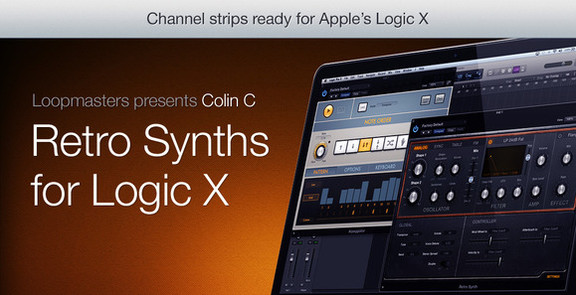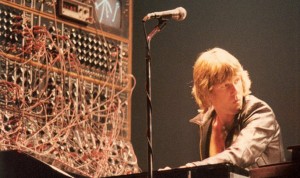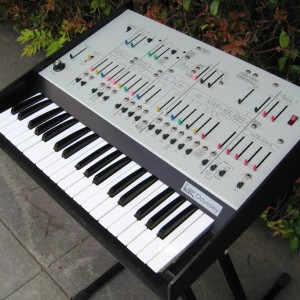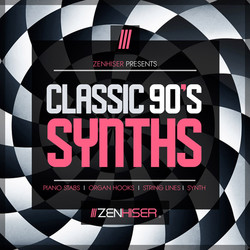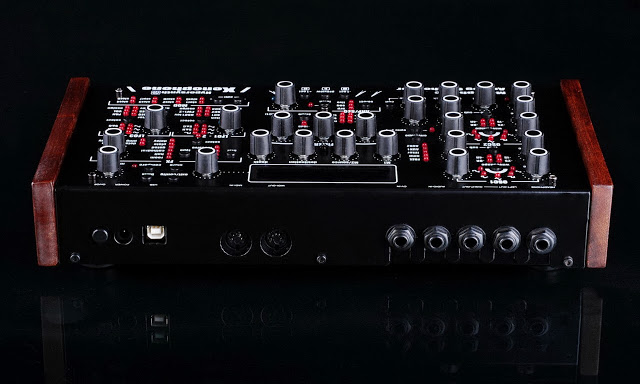Retro Synths for Logic X- new collection of Logic X synth presets
Loopmasters has released Retro Synths for Logic X, a new collection of Logic X synth presets and mix ready channel strips by Colin C.
Essential Retro Synth is a brand new collection of 100 synth presets and 50 bonus channel strips tailor made by Logic expert Colin C which showcases a broad range of rich, lively tones perfect for all electronic producers working within the Logic X environment wanting to get the most from the Retro Synth plugin that come bundled with Logic X.
“Retro Synth” is a powerful new software plugin included with the Logic X package that aims to emulate the synthesis types and sounds of legendary synthesizers from Yamaha, Moog and Korg. With four unique operating modes of synthesis including Analog, Sync, Wave Table and Frequency Modulation, Retro Synth is capable of a huge palette of sounds ranging from classic warm analogue tones to loud digital crunchiness and everything inbetween.
Within these 100 presets you’ll find Deep and Warm Basses, Elegant Leads, Rich Evolving Pads, and Killer FX including white noise risers, tonal twists suitable for many electronic productions including Deep House, Drum and Bass, EDM, House and Ambient.
Also included are 50 bonus Channel Strip settings, complete signal processing designed by Colin C. who’s been mixing and engineering music with Logic Pro for nearly a decade, and boasts credits to not only numerous EDM labels, but also TV and Film including NBC, FOX, Showtime and Lionsgate Films.
The Retro Synths pack is available for purchase for £19.95 GBP.
The New World of Synthesizer in Osaka
Japanese synthesizer documentary movie “The New World of Synthesizer in Osaka”(Naniwa no Shinsekai) trailer with english subtitle.
THE 14 SYNTHESIZERS THAT SHAPED MODERN MUSIC
FACT has an interesting article out called: THE 14 SYNTHESIZERS THAT SHAPED MODERN MUSIC, you can read the intro below and then jump over to the site for the full listing.
In 2014 the synthesizer is as important, and as ubiquitous, in modern music as the human voice.
The concept is simple enough – a basic circuit generates a tone, and the tone can then be controlled by some sort of input, human or otherwise. It’s a concept that has provided the backbone for countless instruments over the last 100-or-so years, and like it or not, has informed the direction of modern music both in the mainstream and in the underground.
These days it’s easy enough to boot up your cracked copy of Ableton Live or Logic and open any number of VST synthesizers, giving you access to decades of technological innovation. It is however important to know how these sounds took hold in the first place, and why they were so successful. Sometimes it was simply the fact that there was no competition (the Minimoog) and sometimes the success was simply down to price and availability (the MS-20).
The following list contains a few of the key instruments that helped shape electronic music, from the obvious (the unmistakable Roland TB-303) to the obscure (the humble Alpha Juno 2). You might be surprised how many of them lie at the center of your favorite tracks.
Example:
Moog had successfully conjured up a brand new market for portable, user-friendly synthesizers, and American manufacturer ARP knew they needed to get in on the action. Their bulky 2500 and 2600 modular units were popular and incredibly widely used, but it was smaller Minimoog competitor the Odyssey that really captured the public’s imagination. The synth was basically a stripped-down version of the 2600, and turned out to be the company’s best selling synthesizer. Considered by many to be inferior to the Moog, as it only boasted two oscillators to the Minimoog’s three and was saddled with a comparatively limited filter, the Odyssey was actually the world’s first duophonic synthesizer – capable of playing two notes at once.
Nord Wave – Vintage Digitals (sample pack)
Nord Wave – Vintage Digitals Vol1, by Don Solaris.
Here’s what he has to say about the sound library:
Instead of going for the factory presets of various machines and sampling those, we went one step further. We went for the original ROM waveforms. And more importantly, their original loop points. The goal was high – to ensure 100% authentic sound. No cross-fade looping techniques here, everyone can do that nowadays and did we mention it totally kills the soul of the sample (due to the x-fade process itself).
Hence we used totally different approach and you bet these loops in here required a lot of screwdriver work to match original factory loop points. But the result is 1:1 original playback where you can no longer distinguish a copy from the source.
available at: http:///donsolaris.com/nord
This Nord Wave library is 99 multisamples made from the following machines:
- Roland U-20
- Roland JD-990
- Roland JV-1080
- Yamaha SY-22
- Yamaha SY-85
- Yamaha TX16W
- Ensoniq SQ-1
- Kawai K-1 rII
Classic 90′s Synths – sample pack featuring a collection of over 210 loops and samples
Zenhiser has launched Classic 90′s Synths, a sample pack featuring a collection of over 210 loops and samples.
We’ve packed Classic 90s Synths with 93 original synth loops including piano loops, organ hooks, string lines and synth hooks.
There are multiple variations of some synth lines which means a delivery of 211 synth samples in total making this Zenhiser pack ideal for people who want the option to tweak or alter their lines.
With so many sexy samples from the Nineties club sound can you honestly not buy this pack, it’s your responsibility as someone who spent the decade on the dance floor’s or as a producer who wants to inject this groove tastic sound into their tracks.
The sample pack costs $35 AUD.
Time machine: Juno-60 and Juno-106
Five demo clips of the Roland Juno-60 and Roland Juno-106, two classic DCO-based analog synths of the ’80s. LinnDrum – drums; Eventide H3000-D/SE = dual long delay
Clip 1: Juno-60: Bass; Juno-106: Brass — 00:10
Clip 2: Juno-60: Harp; Juno-106: Strings — 01:57
Clip 3: Juno-60: Syn Strings; Juno-106: Synth — 04:21
Clip 4: Juno-60: Strings; Juno-106: Bass — 07:09
Clip 5: Juno-60: Organ; Juno-106: Bass — 09:54
The Roland Juno-60 is a popular analogue 61-key polyphonic synthesizer introduced by Roland Corporation in 1982 and a successor to the slightly earlier Juno-6. Like its predecessor, the Juno-60 has some digital enhancements, used only for clocking the oscillators and for saving and loading patches. This instrument was succeeded by the Roland Juno-106 in 1984.
Roland was losing market share with the Juno-6 in competition against the Korg Polysix. Related in features and price-class, the Polysix featured external control and patch memory, which the Juno-6 lacked. These features were quickly added to the Juno-6’s design, which sonically and architecturally did not change notably between the two versions, and then released as the Juno-60.
The Juno-106 is a very common and widely used analog polysynth. It continues to be one of the most popular analog synths due to its great sound and easy programmability. It was the next major incarnation of the Juno-series, following the Juno-60. While it has virtually the same synth engine as the Juno-60, the 106 added extensive MIDI control making it one of Roland’s first MIDI-equipped synthesizers. There was also increased patch memory storage, up to 128 patches instead of the 56 patches available in the Juno-60. However, the Juno-60 is often said to have a slight sonic edge over the more advanced 106. The 60 had the ability to modulate oscillator pulse from its envelope and has a “punchier” sound quality.
The Juno-106 is a six-voice polyphonic and programable analog synth with one digitally controlled oscillator (DCO) per voice. While classic monophonic synths used two or three oscillators to create a fatter sound, the Juno-106 uses built-in Chorus to fatten up its sound to dramatic effect. The nature of its DCO meant it was stable and always in perfect tune but still warm and analog. There is an excellent 24dB/oct analog lowpass filter with plenty of resonance and self-oscillating possibilities and a non-resonant highpass filter. The programable pitch/mod bender can be assigned to control the DCO pitch, VCF cutoff, and LFO amount all at once or individually.
The Juno-106 was the first MIDI equipped Juno and its implementation is quite good. There are 16 MIDI channels available and MIDI SysEx data can be transmitted/received from all the sliders and buttons for total remote control and sequencing capability. A switch on the back of the keyboard, next to the MIDI ports allows the user to switch between three types of MIDI modes: Keyboard and Hold data only; Keyboard, Hold, Bender, Patch selection data; or All data (including SysEx). Most users simply set it to MIDI Function mode 3 and forget it.
This synth is incredibly straightforward and very powerful. It’s SH-series derived panel layout is easy to understand and very hands-on. Use it to generate lush pads, filter sweeps, and funky bass lines and leads. The Juno-106 is an awesome learning tool for anyone new to analog synthesis, as well as an electronic musician’s dream for its warm analog sounds coupled with modern features like MIDI and memory – all at a very reasonable price. And still the Juno-106 has an even cheaper alter-ego in the form of the HS-60 – a hobbyist version with built-in speakers.
“Industrial World” 2013
Background video information:
Hi everyone! SynthFreq here with a new composition titled “Industrial World” written by Crystal (msMotif-6), performed by Danielle and Crystal using the following synths:
Jupiter-8: filtered bell patch
Roland D-50: bright ice
Roland Alpha Juno-1: Z-lead
Roland A-90ex: split syn bass/(midi) to JV-1080 pulse lead
Yamaha Motif-6: percussion live set
Xenophone – New Monophonic Analog Hardware Synth from HyperSynth
Here are all the details:
Synth-Engine:
Xenophone is an advanced analog mono-synth with 100% analog signal path. It has three oscillators, two subs, three ring modulators, one multimode VCF and analog distortion, all based on discrete analog circuits followed by a high quality stereo digital delay and reverb. The extensive modulation capabilities of the sound engine plus the warm and unique character of Xen’s filter enriched by built-in analog distortion make it the best choice for creating deep basses, aggressive leads, transparent and crisp synth lines, acid sequences, complex arpeggios, punchy percussive sounds, extreme SFXs and more. Besides the synthesis capabilities, it can be used as a powerful audio processor to colorize an external input signal by analog filter, distortion and DFX.
Control and User Interface:
26 encoders and 27 buttons put all the major parameters easily reachable with no menu diving. The Encoders smoothly turn and provide you 96 steps per rotation that mimic pot’s feeling and sweep range. The layout is designed in a way to be simple and intuitive. Using 88 LEDs and a free-angle OLED display, it is easy to get the idea of the current preset at a glance. Master Tempo and all LFOs have blinking LEDs that show the BPM and rates. The presets can be previewed without external keyboard using 3 buttons in 3-octave range or pre-defined notes. User interface is easy to learn and creative with no useless bells and whistles. You can get a huge sound out of the box only with a few tweaks and changes.
Enclosure and Connectivity:
Xenophone has a rigid Aluminum enclosure that comes with a pair of vintage style hand-made wooden side panel that made out of maple wood in two options: flat and tilted.
The box connects to the outside world using 2x balanced outputs (stereo), 1x headphone jack, 1x external input, 1x CV input, MIDI in/out, USB and DC power in.
MIDI and DAW Integration:
Xenophone can function as a standalone instrument or fully programmable synth. It responds to the standard MIDI messages plus dedicated CC and NRPNs. The maximum implemented resolution in NRPN mode is 12bit, 4096 steps for filter frequency that provides super smooth sweep over the frequency range in compare to 127 steps CC standard!
The computer integration is an important feature of a modern synth that plays vital role in the studio. Xenophone comes with a software editor called: XEditor. Using this editor you can control and automate every parameter of the sound engine remotely via MIDI and storing your patches on your PC and vise-versa. It also helps you in deep and precise editing the patches. “XEditor” will be available as standalone and VST plug-in.”
http://www.hypersynth.com/xenophone.html
More stuff from MacBeth: Micromac D Part Two: Oscillators
This is the second video aimed to demonstrate the diverse capabilities of the three oscillator desktop sized MacBeth X-Series Micromac-D analogue synthesizer. In this video, we get to hear what the Oscillator section does, plus a few extras! As always, when things get going- hows does one adequately show what the potential of this thing has? Watch on………..there’s some Trio-phony too!
Buchla Music Easel Quick Start & Overview
Buchla’s instruments, such as the Music Easel, use a different method of timbre generation than Moog synthesizers. Moog units use oscillators with basic function generator type waveshapes and rely heavily on filtering with 24dB resonant low-pass filters, while Buchlas are geared toward complex oscillators using frequency modulation, amplitude modulation, and dynamic waveshaping to produce other forms of timbre modulation. Many of Don Buchla’s designs, including the Low-Pass Gates (later called Dynamic Managers) contain vactrols, photoresistive opto-isolator employed as voltage-controlled potentiometers, which contribute to a very “natural” Buchla sound.
At the January, 2012 NAMM show, Buchla & Associates announced new ownership, retaining Don Buchla as Chief Technology Officer and investment in the design, manufacturing, and marketing of Buchla products and the development of an expanded product line, and the company moving forward under the name Buchla Electronic Musical Instruments. One year later, Buchla Electronic Musical Instruments re-introduced the Buchla’s Music Easel.

